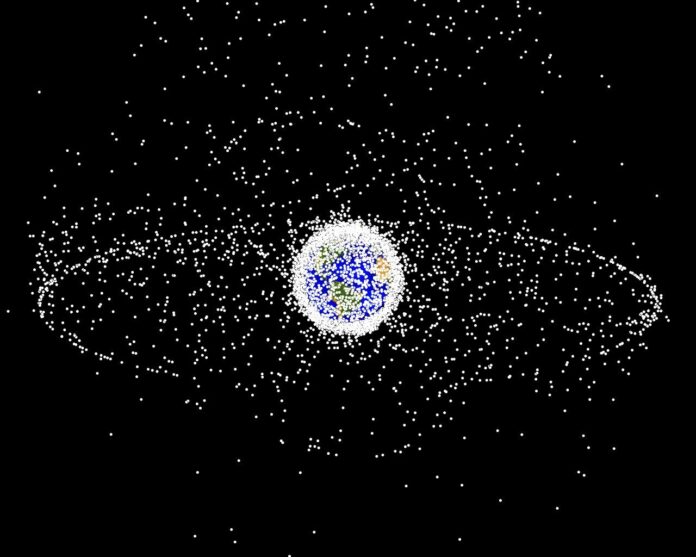The vast expanse of space, once considered pristine and empty, is now cluttered with debris, posing a significant challenge to spacecraft and satellite operations. Much like aviation’s emphasis on safety measures to prevent collisions and accidents, managing space debris has become a crucial aspect of space exploration. Drawing parallels to aviation safety measures, implementing strategies to mitigate the risks posed by space debris has become imperative for maintaining safe orbits and ensuring the longevity of space missions.
Space debris comprises defunct satellites, spent rocket stages, and fragments from collisions or explosions of spacecraft. These debris particles, ranging from tiny fragments to larger objects, orbit the Earth at high velocities, posing a hazard to operational satellites, spacecraft, and even the International Space Station (ISS).
The concept of space debris management echoes aviation’s approach to minimizing mid-air collisions and ensuring airspace safety. Much like air traffic controllers coordinate and manage aircraft movements to prevent collisions, space agencies and organizations implement strategies to monitor, track, and mitigate potential collisions with space debris.
Monitoring and tracking space debris involve the use of ground-based radar and telescopes to detect and catalog objects in orbit. This surveillance network continuously monitors the paths of debris, enabling space agencies to predict potential collisions and maneuver operational satellites or spacecraft to avoid these hazards.
The practice of maneuvering spacecraft to avoid collisions draws parallels to aviation’s practice of altering flight paths or altitudes to avoid potential hazards. Spacecraft operators execute avoidance maneuvers based on collision predictions, ensuring the safety of valuable assets in orbit by evading potentially hazardous debris trajectories.
In addition to avoidance maneuvers, spacecraft and satellites incorporate shielding and protective measures similar to aviation’s emphasis on aircraft structural integrity. Designing spacecraft with shielding or protective layers helps mitigate the damage caused by smaller debris particles, reducing the risk of critical system failures due to impacts.
Space agencies and organizations also adhere to debris mitigation guidelines, akin to aviation’s protocols for maintaining safe and regulated flight paths. These guidelines include practices such as deorbiting spacecraft at the end of their missions to prevent long-term clutter in orbit or designing satellites with propulsion systems for controlled re-entry into Earth’s atmosphere.
Collaborative efforts between space agencies and international organizations mirror the cooperation seen in aviation safety initiatives. Initiatives like the Inter-Agency Space Debris Coordination Committee (IADC) or United Nations Office for Outer Space Affairs (UNOOSA) facilitate global cooperation in managing space debris, echoing the collaborative nature of aviation safety regulations.
The evolution of technology, similar to advancements in aviation safety measures, plays a crucial role in space debris management. Innovative solutions such as harpoon-based debris removal systems, nets, or even laser-based technologies are being explored to actively remove larger debris from orbit, reducing the risk of collisions.
Education and public awareness campaigns about space debris management mirror aviation’s efforts to educate passengers about safety protocols. Educating the public about the significance of space debris, its implications for space missions, and the importance of responsible satellite disposal fosters a sense of responsibility and support for debris management efforts.
The future of space debris management holds promise with ongoing research into innovative solutions and technologies. Just as aviation continuously evolves safety measures to adapt to new challenges, space agencies strive to develop more effective debris mitigation strategies to safeguard space assets and ensure a sustainable space environment.
Space debris management stands as a testament to the lessons learned from aviation’s safety practices. By applying similar principles of monitoring, avoidance, regulation, and technological innovation, space agencies aim to ensure the safety and sustainability of space exploration for future generations.
The interconnectedness between aviation safety measures and space debris management highlights the synergy between these seemingly distinct domains. As humanity ventures further into space, learning from aviation’s safety measures becomes pivotal in preserving the safety and integrity of our celestial endeavors.
























